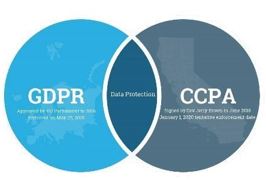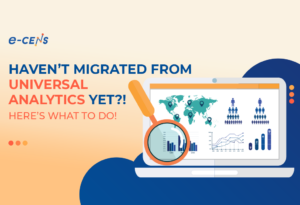Are you Considering a Customer Data Platform (CDP)?
It is a vital element of successful marketing to understand your customers to improve conversion rates. A favorite tool to track, and subsequently target, existing, and prospective customers with customized offerings has long been the third-party cookie. We examined how the regulatory landscape has challenged it in a previous article.
The need to improve conversion rates did not evaporate with the third-party cookie. So, the customer tracking industry has evolved in response to legislation to ensure that you understand your customer and respect their rights to privacy. These consumer rights include access to their own data and the right to have that data expunged. The evolution in marketing strategies that these rights have triggered is no bad thing. Rather than treating our customers as a sea of data, extracting general trends, and predicting general behaviors, we now need to understand how to segment and target individuals based on their specific needs and behaviors. This means examining first-party data provided by data-savvy customers.
The customer-tracking industry’s solution to support your personalized marketing is the Customer Data Platform, or CDP. This is a tool that supports a consent-driven approach to data mining. This article will consider:
- What is a CDP?
- Are you ready for a CDP?
- How can a CDP empower you to remain compliant with regulations?
What is a Customer Data Platform?
One of the issues in emerging markets is that there are many offerings and many pretenders. The market’s selective forces will eventually deal with the latter, but, for now, you need to understand what to expect from your CDP to ensure that you select a robust tool capable of supporting your needs.
Your CDP must solve the problem of disconnected and siloed customer data. It acts as a central repository for dispersed customers to enable you to offer the appropriate engagement to the right person at the right time. With advanced data analytics, you can expect to personalize every customer touchpoint from marketing to sales to service.
Handling unstructured data that originates from many sources is no small challenge. When selecting a CDP, ensure that it is capable of handling the following process:
Pillars of a Customer Data Platform:
- Ingestion: First, the data is gathered into the CDP. This requires that the system ingest all the available data sources, including structured and unstructured data, website-behavior, social-platform data, email-derived data, among other possible sources.
- Collection and Retention: The next step consolidates data collected from the various data sources. These may include your “brand owned” platforms like your website and mobile applications. You may also mine the data from Customer Relation Management (CRM) platforms, social media, email, paid campaigns, etc. Here the data is organized in a properly structured manner to scaffold the next step.
- Profile Unification, also known as Visitor ID stitching: All user data must be mapped so that it is associated with a unique ID. Those familiar with a traditional database structure will know that every data store applies its own primary key. The CDP system also requires a primary key for each user. This reduces the instances of users being replicated within your data lake. Luckily, in many of the data sources, email is often a unique identifier for your user, simplifying the consolidation of user data.
- Creation of Traits, Segmentation, and Audiences: This step slices your data according to exhibited user traits and potential audience-membership for each customer. This may include users who exhibited intent to purchase or any other goal followed by the marketing department.
- Activation: The final step is sending these personas and profiles to their respective destinations and thus activating the various personalization tools such as Target, Google Experiments, and MailChimp.
How a Customer Data Platform Differs from a Data Management Platform
CDPs and Data Management Platforms (DMPs) are often confused with each other. This is understandable as they both use data to build traits and audiences and then leverage that to target users for advertising. What separates the two platforms is the kind of data being used.
A CDP is a platform best used to collect and organize data from the user’s website behavior, engagement on mobile apps, sales history, viewing history, or any other touchpoints your brand may have. 1:1 user mapping and targeting are easily achievable in a CDP because first-party data is one of the core aspects of a CDP data-source pool.
A Data Management Platform (DMP) is a platform that collects and manages large anonymous data sets of audiences. DMPs acquire their data from big data sellers in a masked manner. An example of the data seller could be Twitter, who sells billions of users’ anonymized data. 3rd party data is the core identifier of a DMP data-source pool.
Are you ready to onboard a CDP?
A CDP is a big-ticket item. It is vital to be positioned to use the full functionality of a CDP as soon as your data is unified and ready to segment your customers. To establish your preparedness, you should be able to answer all of the following questions:
- What is the short and long term goal for your brand?
- What is the current state of the data warehouse in the organization?
- What do you hope to extract by analyzing customer data?
- What are your strategies to target each consumer segment to improve conversions?
If your organization has already responded to these driving factors, you are likely ready to onboard a CDP. It is important not to jump in too deep too soon. If you are not already applying analytics data to its full potential, consider expanding your investment there first. For example, an organization that is only running 1 or 2 A/B tests per quarter is not positioned to make full use of the data analytics potential offered by a CDP.
Your organization needs to have proven its ability to leverage segmentation analytics in marketing campaigns to be capable of generating the expected ROI to balance the investment in a CDP.
CDPs and Compliance
With non-compliance fines and penalties for security breaches reaching sums in the tens of millions to hundreds of million dollars, the penalties that the European GDPR and the CCPA impose upon companies that suffer a breach are significant. With the potential of losing 4% of your company’s global annual turnover, the impact of penalties is potentially devastating.
As Forbes so succinctly put it, “every company is a data company”. Companies collect and store user data in different forms – often in a siloed manner. This means that each silo represents its own breach risk. Also, to remain compliant to regulatory requirements such as the user’s right to have ALL their data expunged from the data stores, it becomes a monumental task to identify that user across every silo and demonstrate that their data has been removed.
A well-designed CDP is secure, and its function is to manage the contents of Single Customer View (SCV). Regulatory compliance is, therefore, built into the system when a CDP can print or transfer an SCV on receipt of Subject Access Request (SAR) or, indeed, delete that data forever.
Conclusion
CDPs are a powerful tool in your marketing toolkit. By design, they are secure, compliant with the regulatory environment, and allow you to understand your target audience. If your marketing team has already proved their analytical prowess, they will love what these systems can do for you.
Popular CDPs available in the market

Disclaimer – Declaration of interest
We are not impartial observers of the CDP market and the impact on our customer’s regulatory environment. Here at e-CENS, we are CDP specialists, offering expertise in selecting and tailoring our client’s CDP solutions.
If you are ready to take a deep dive into which CDPs integrate best with your current Marketing and Technology stacks, contact us. We support the end-to-end cycle of adopting CDPs, from discovery to identifying and implementing the tech stack to support your consumer targeting – and the regular maintenance of these tools.
Up Next
Next, we discuss the Key Considerations When Adopting a Customer Data Platform:







